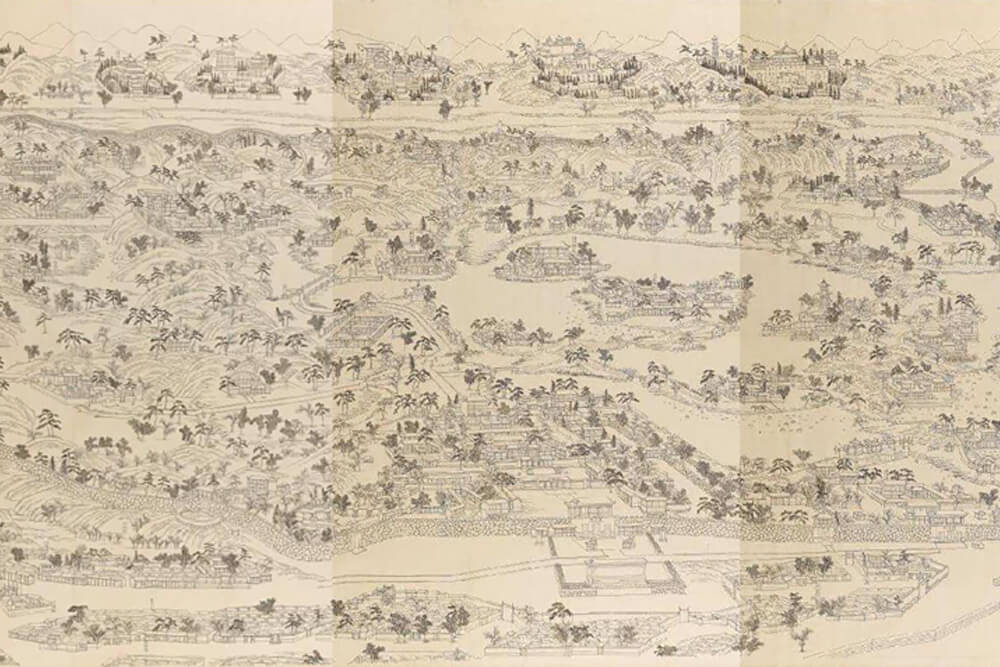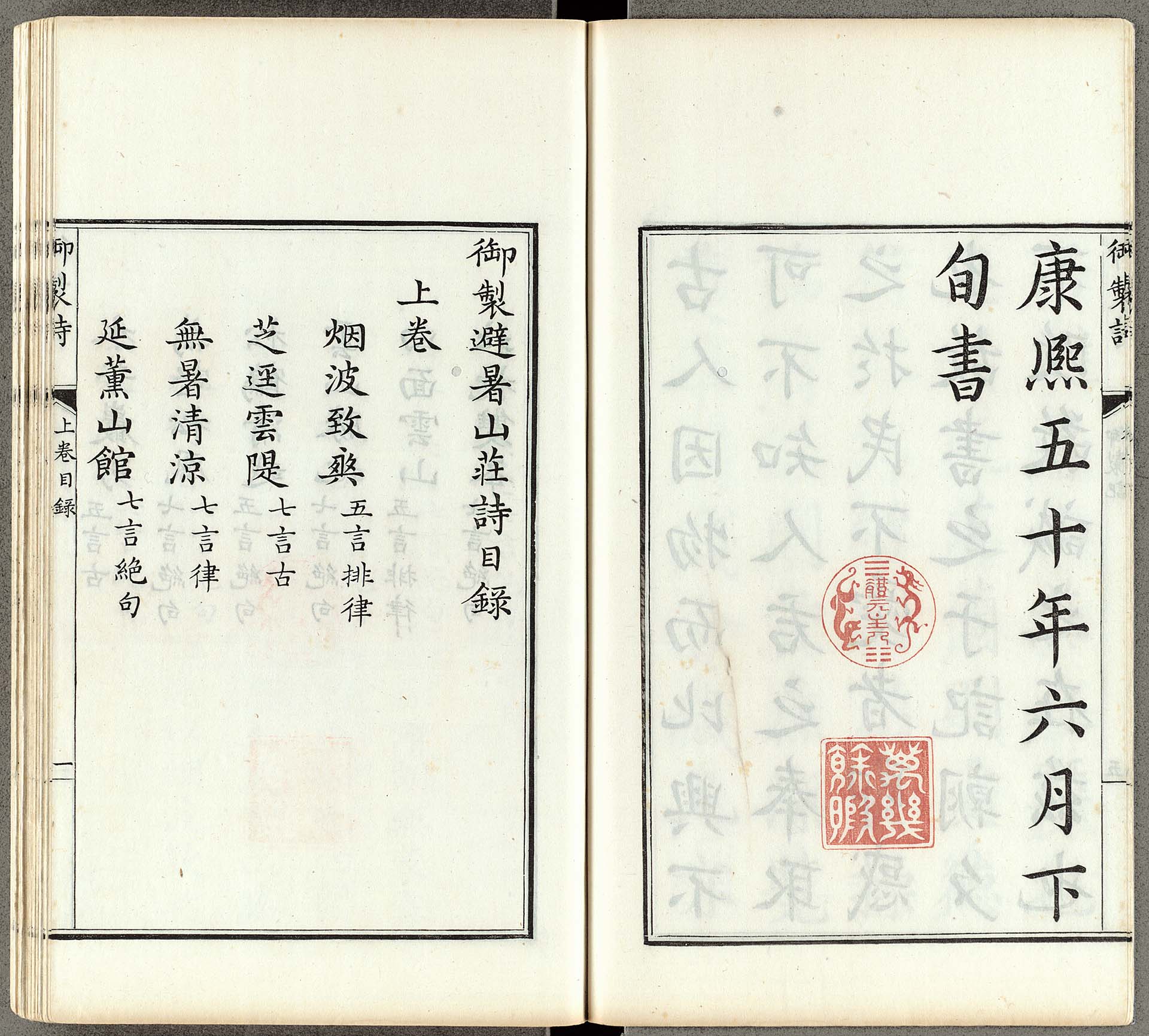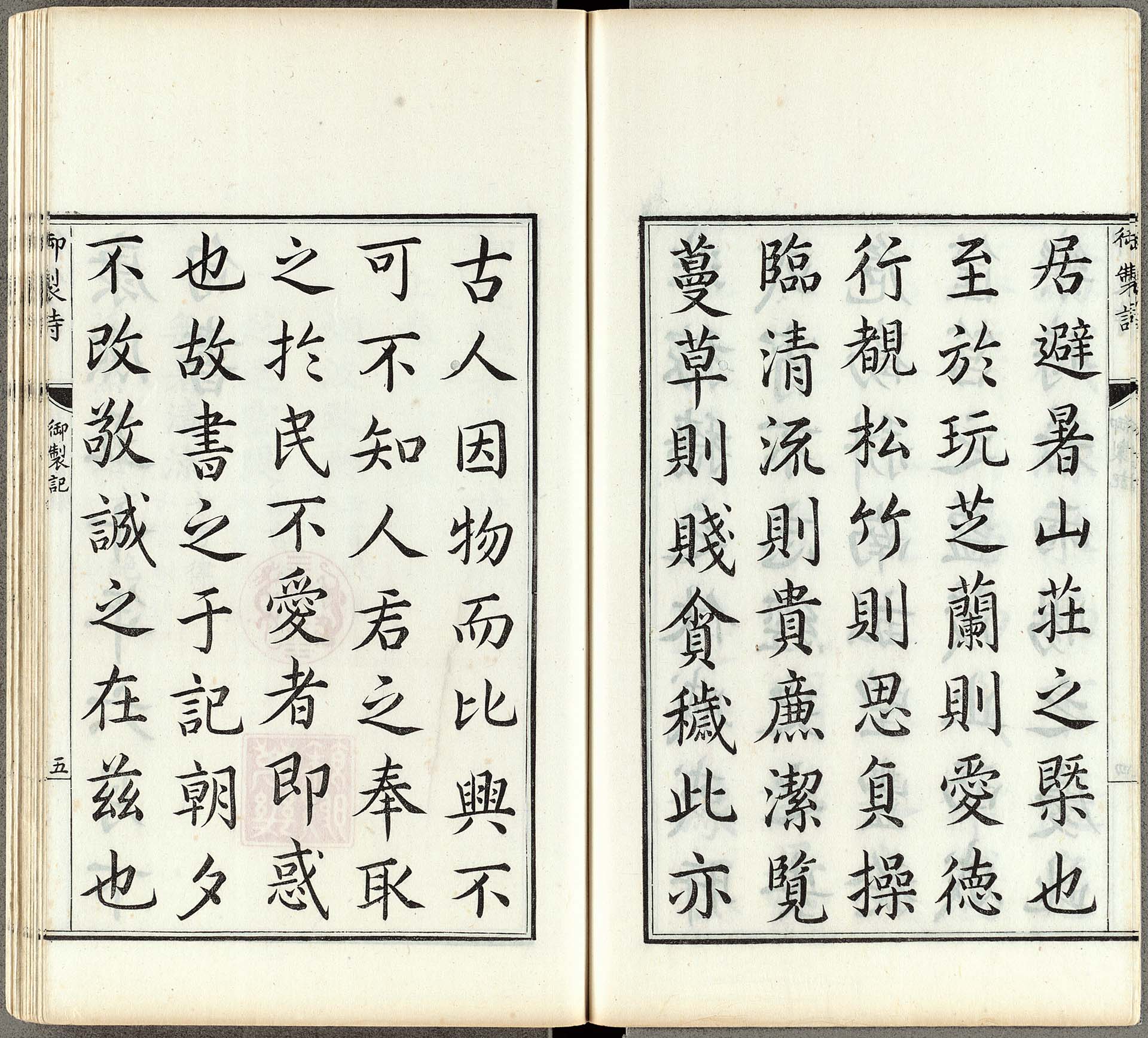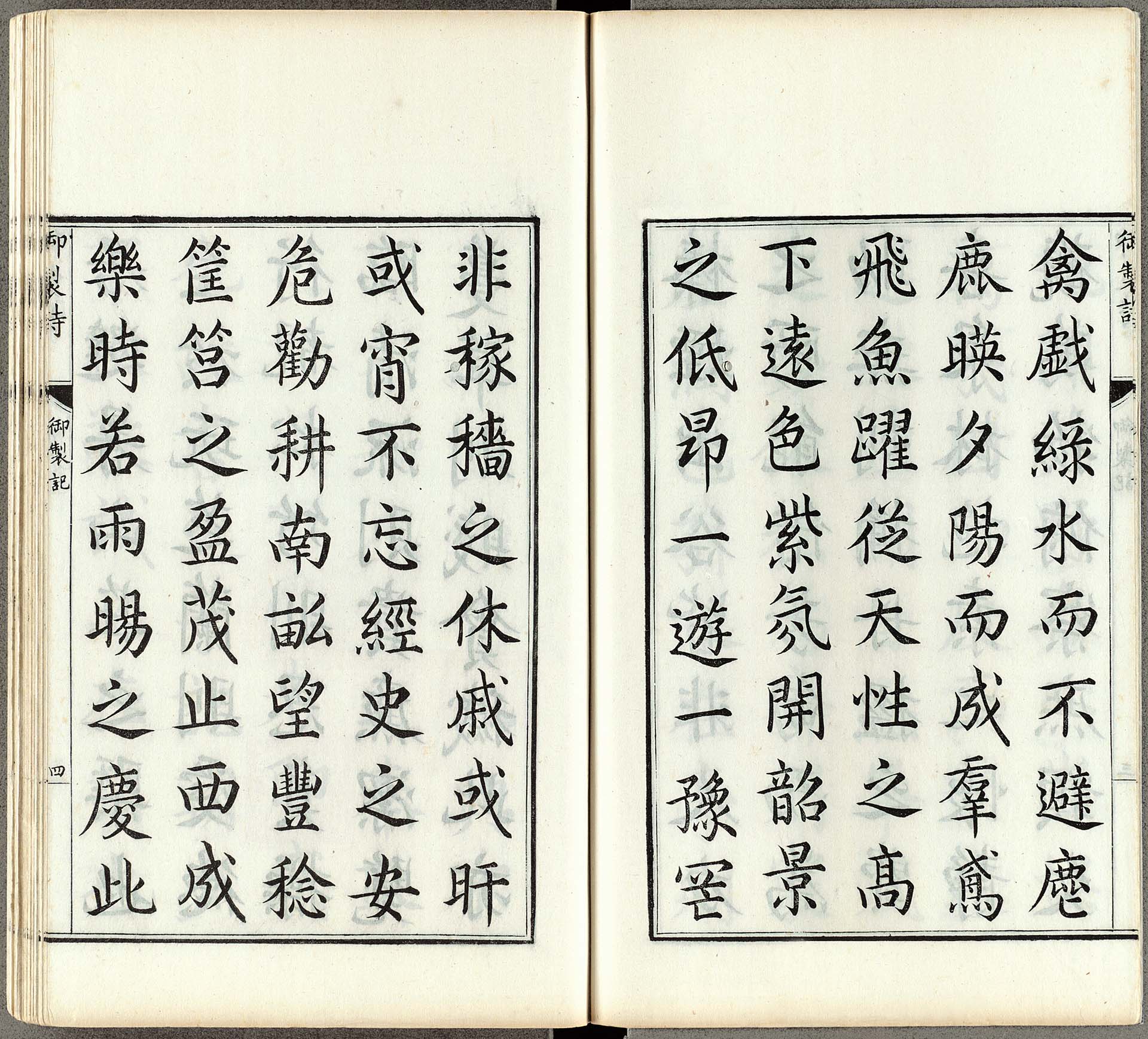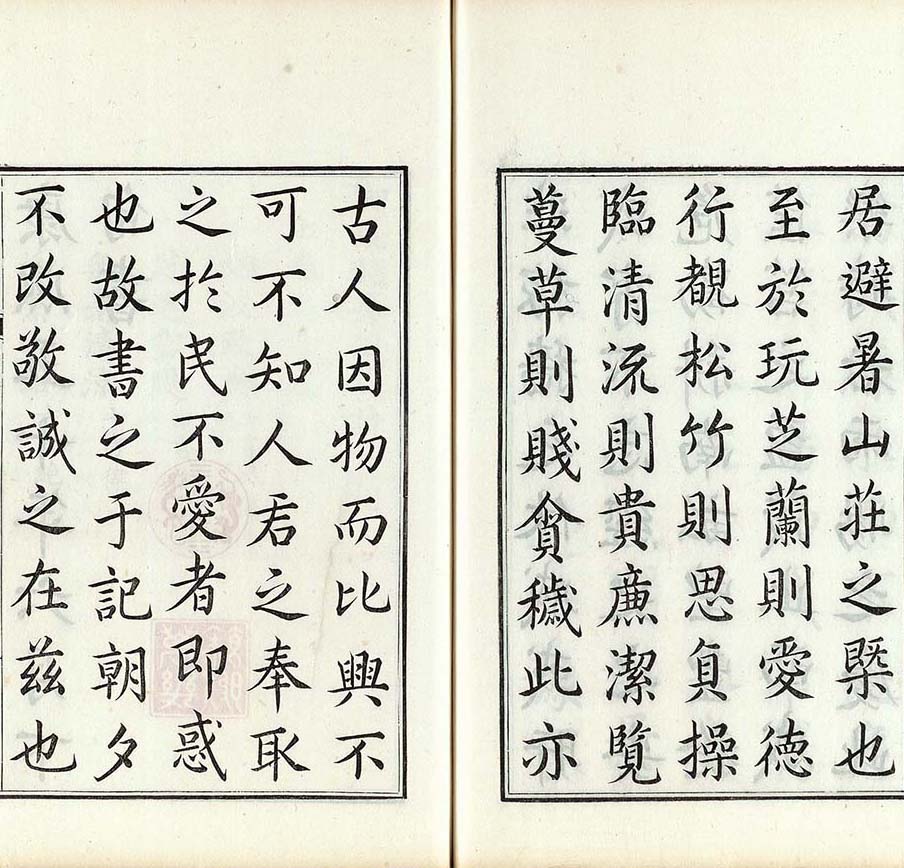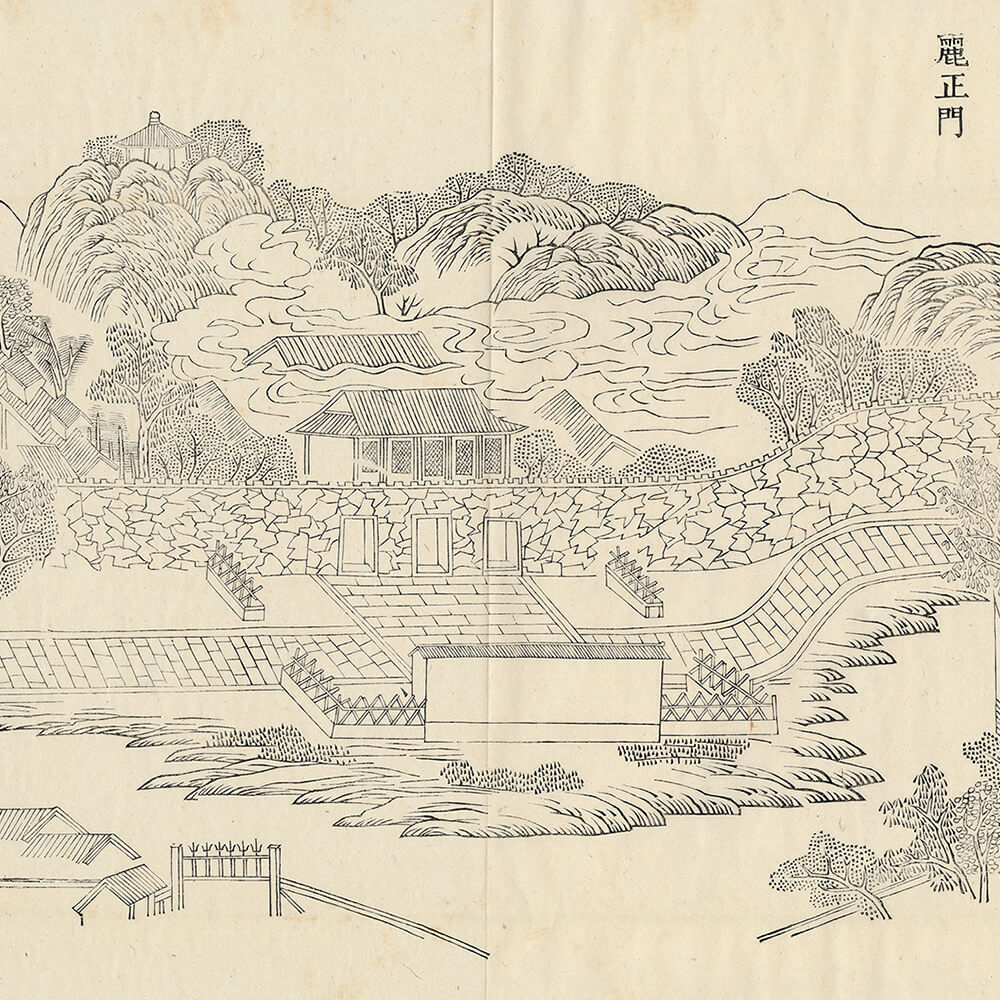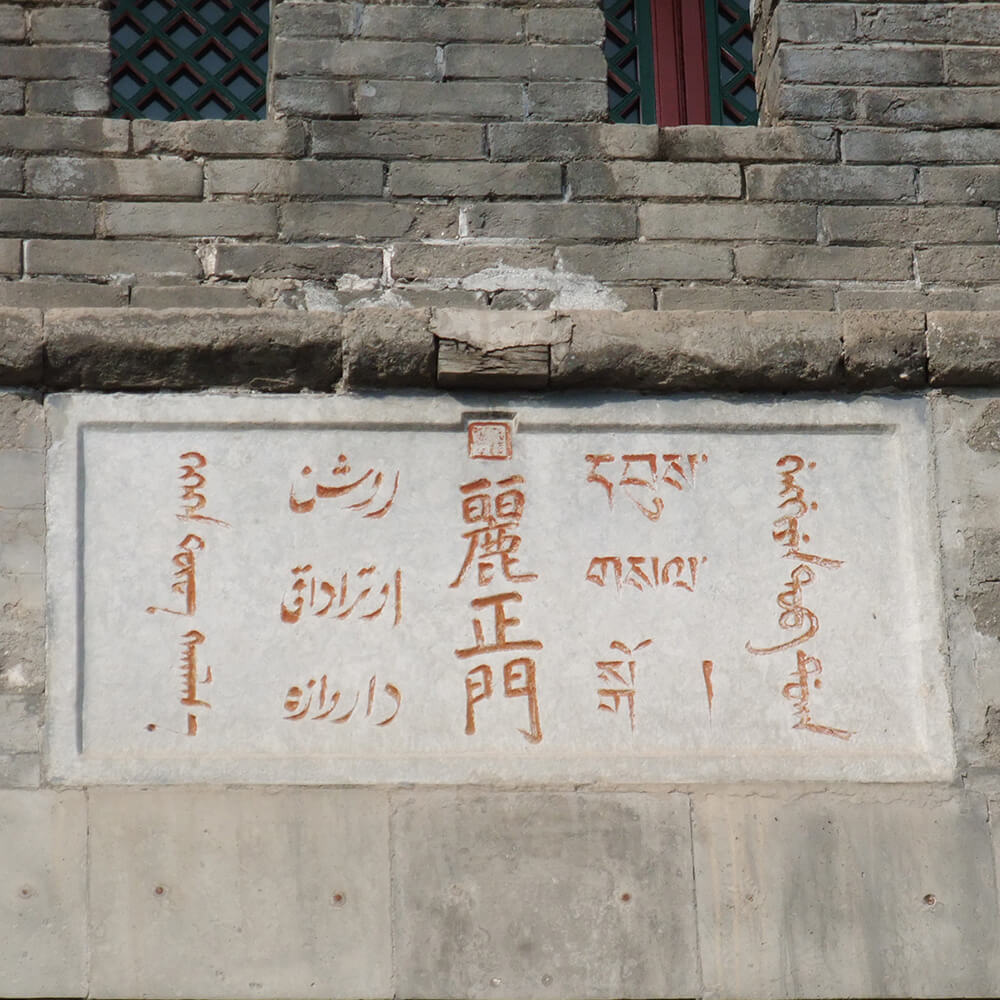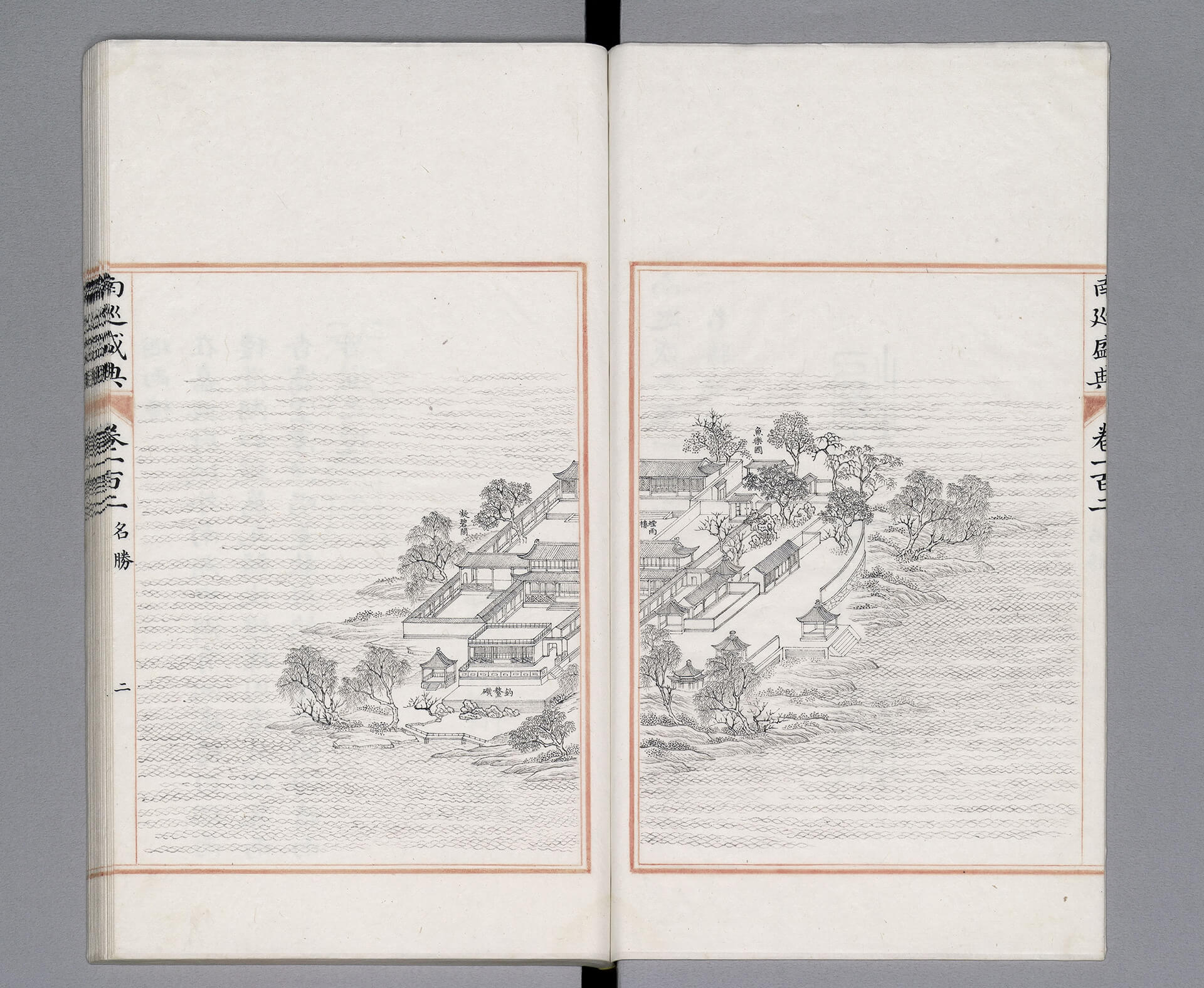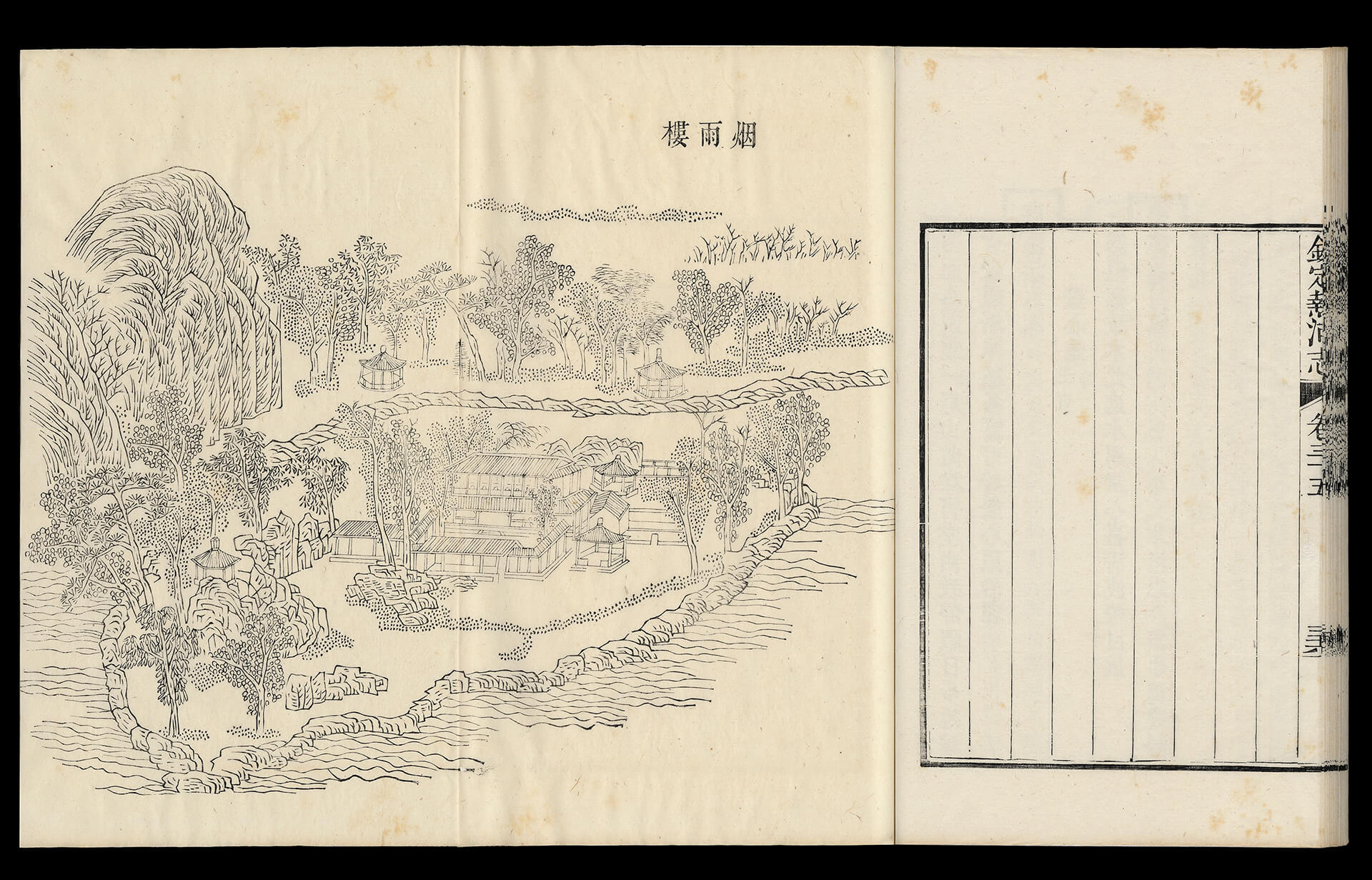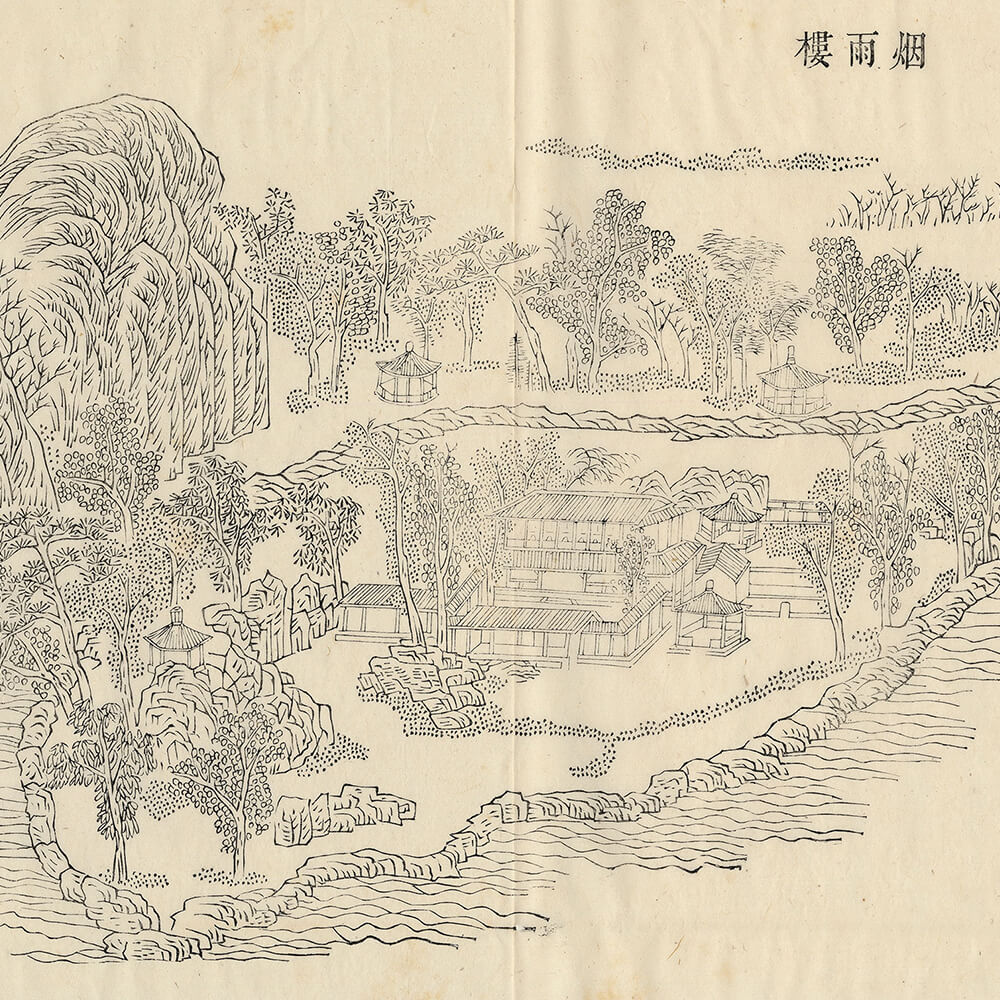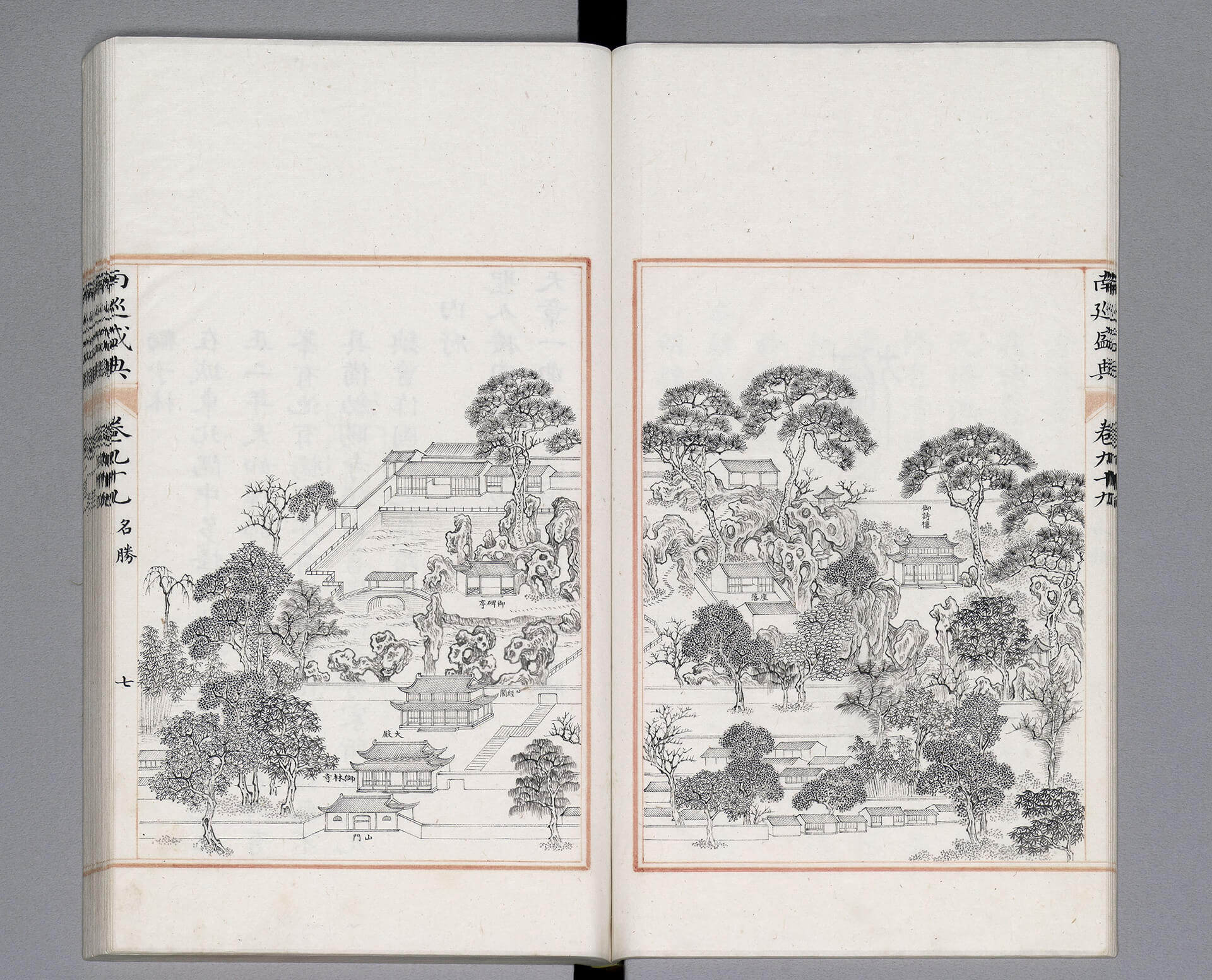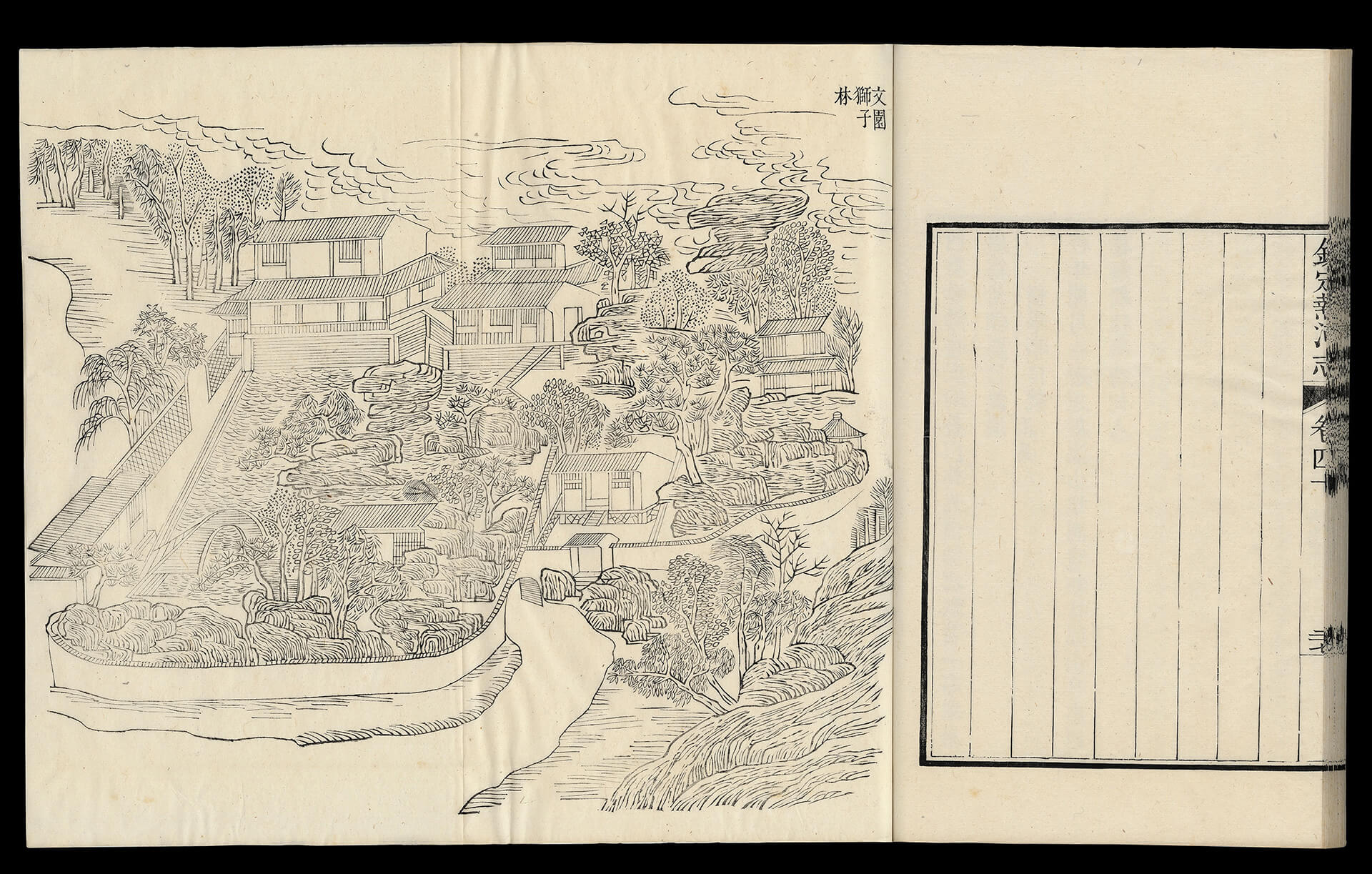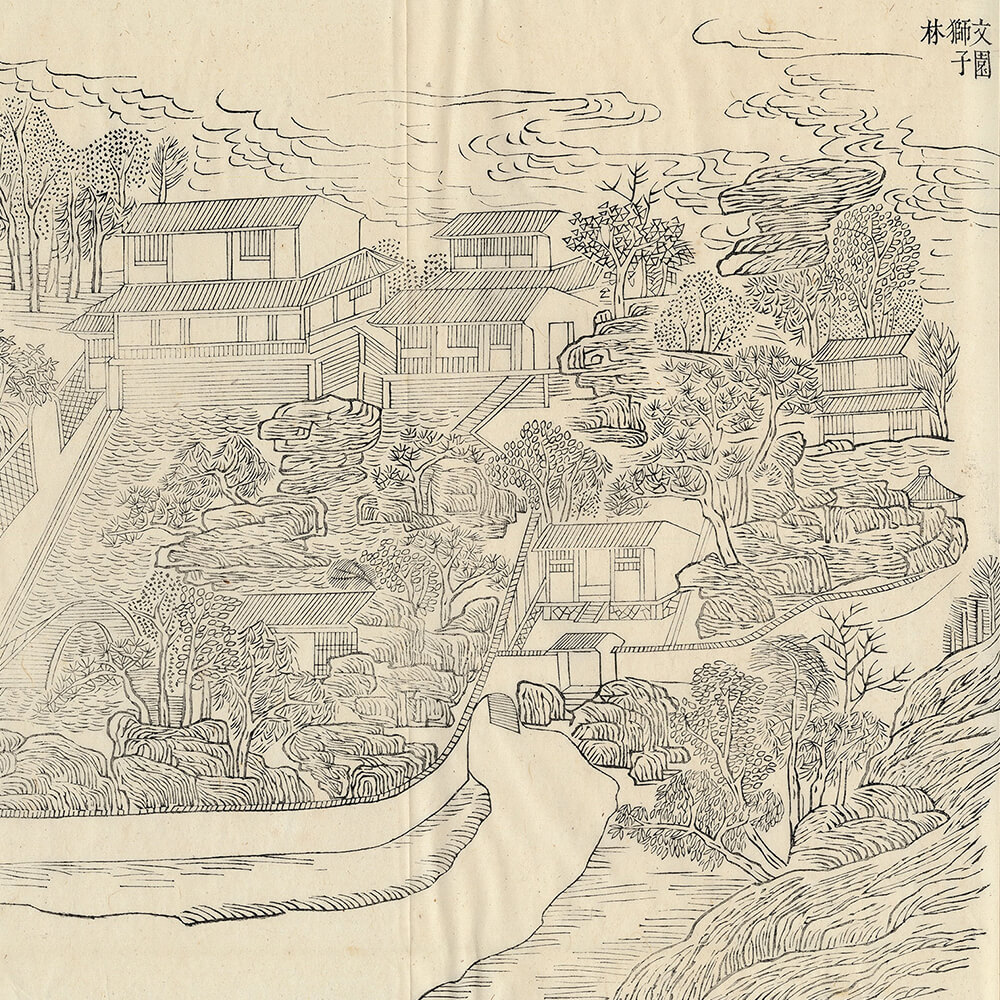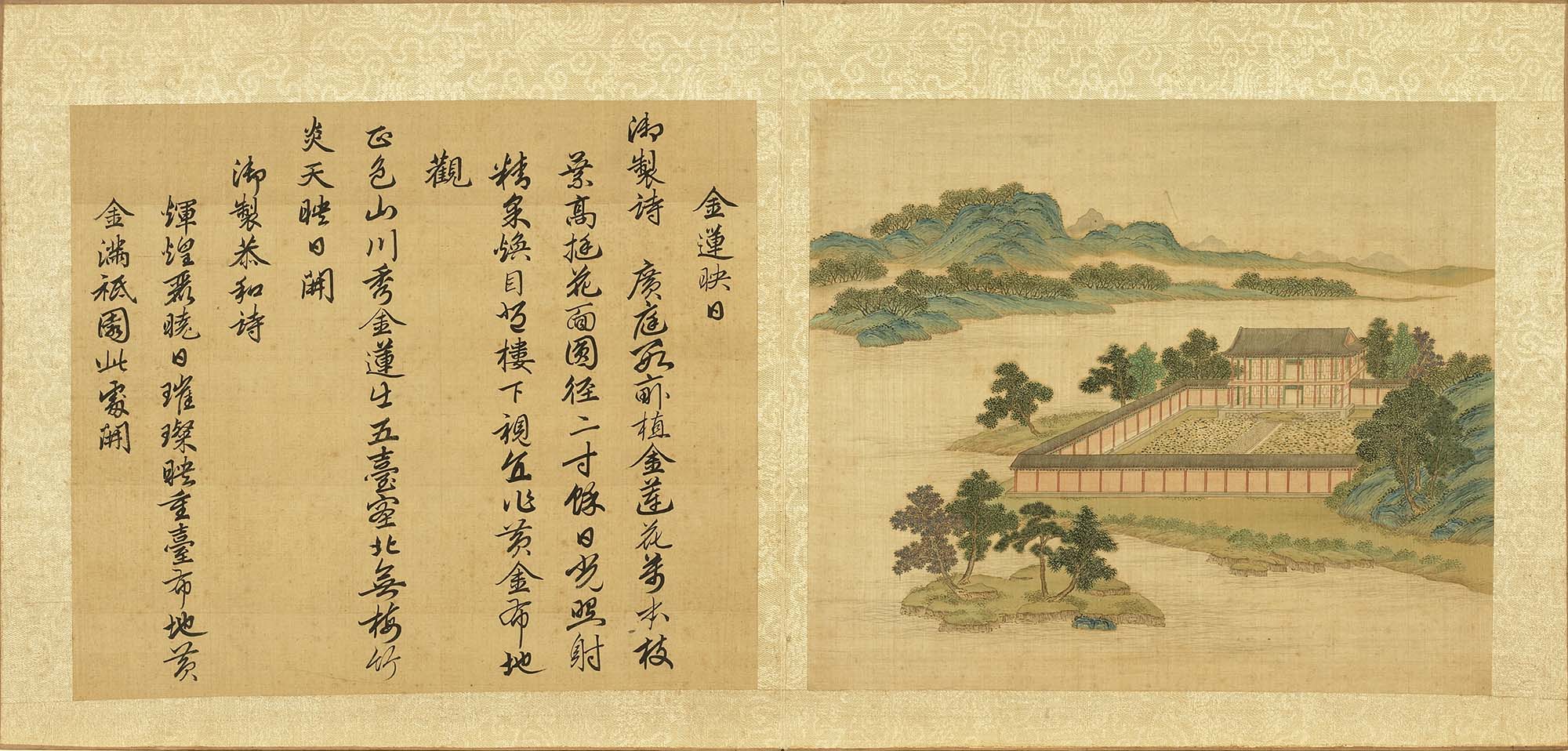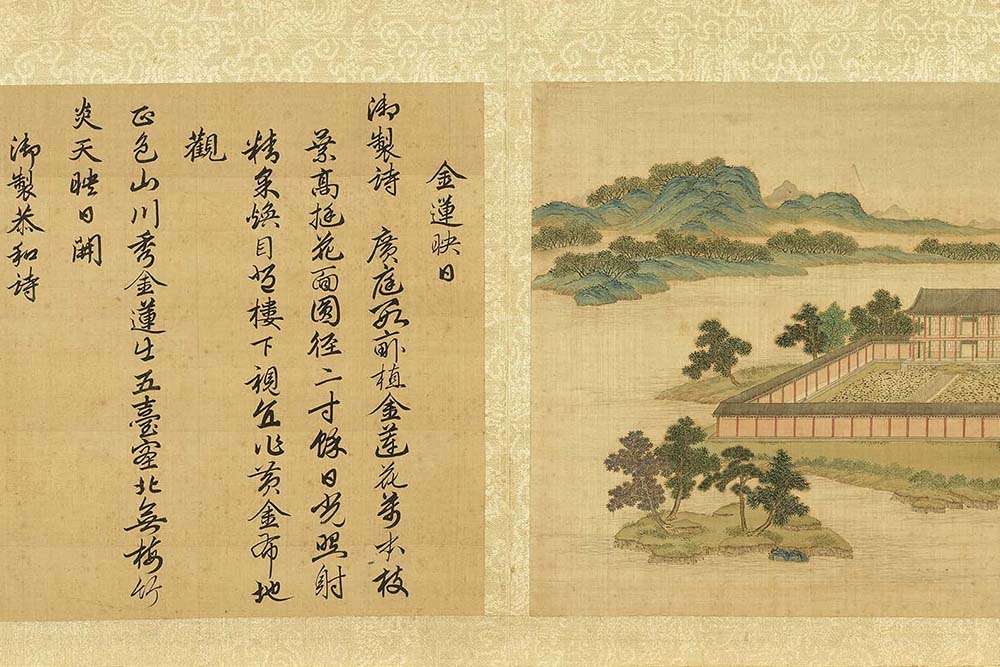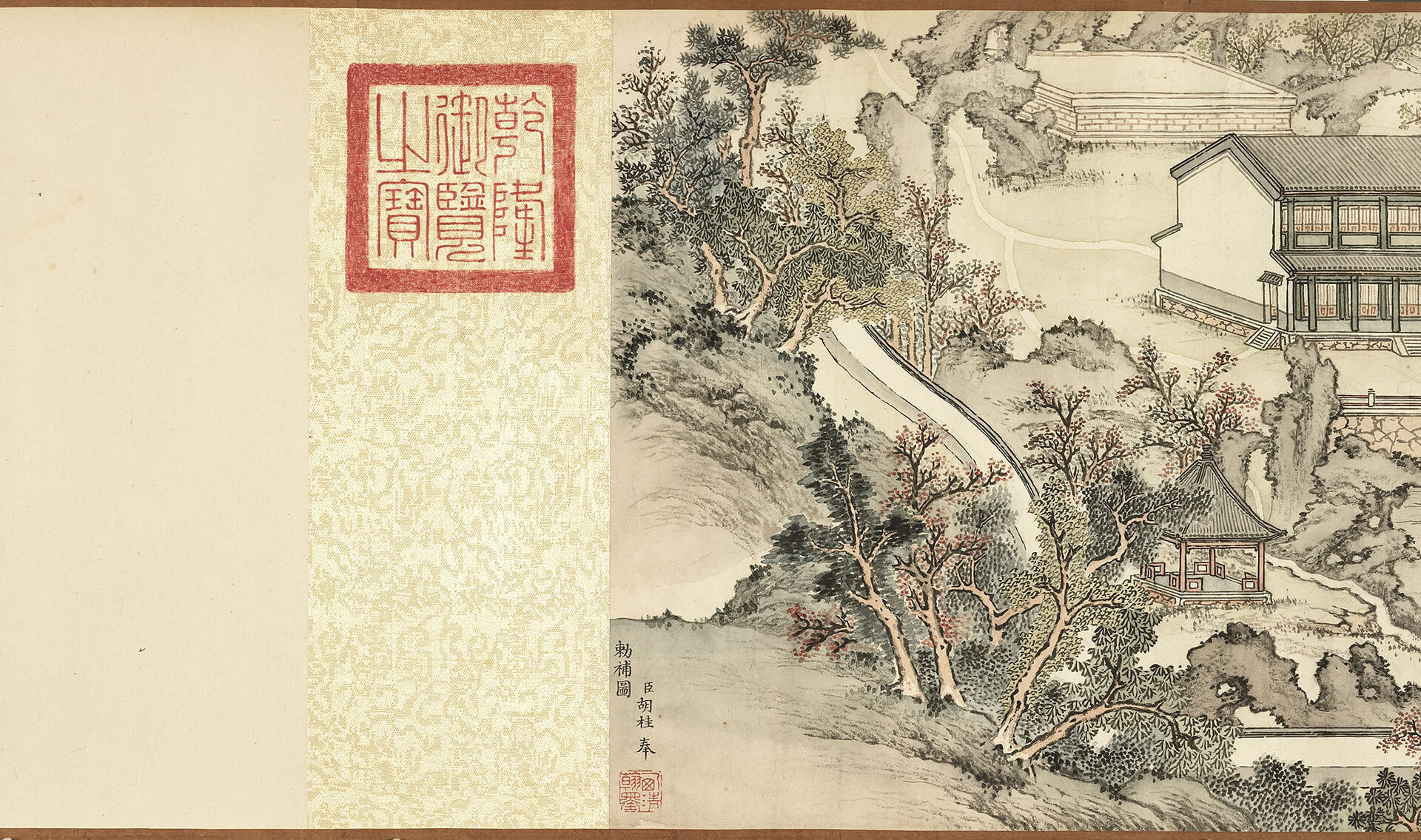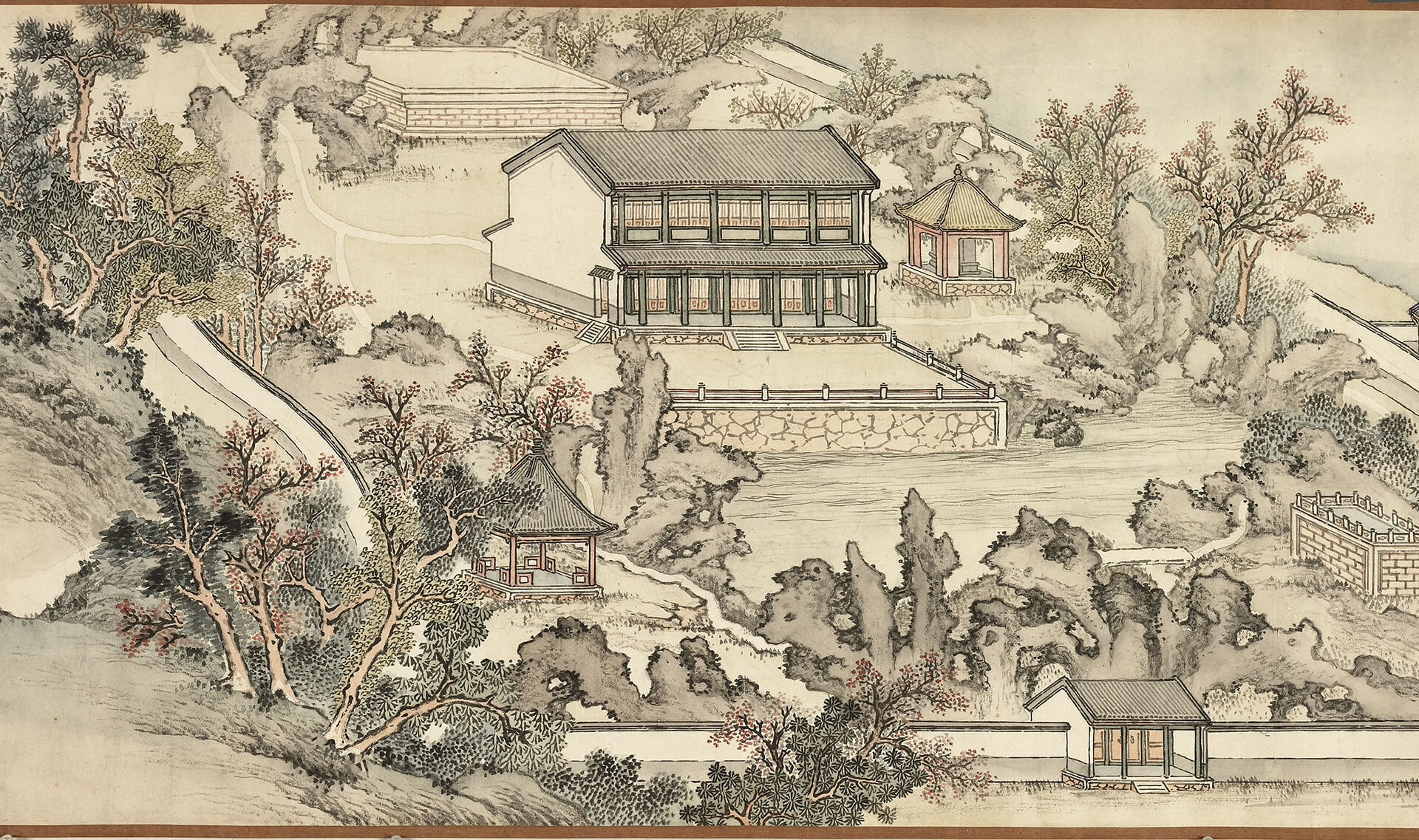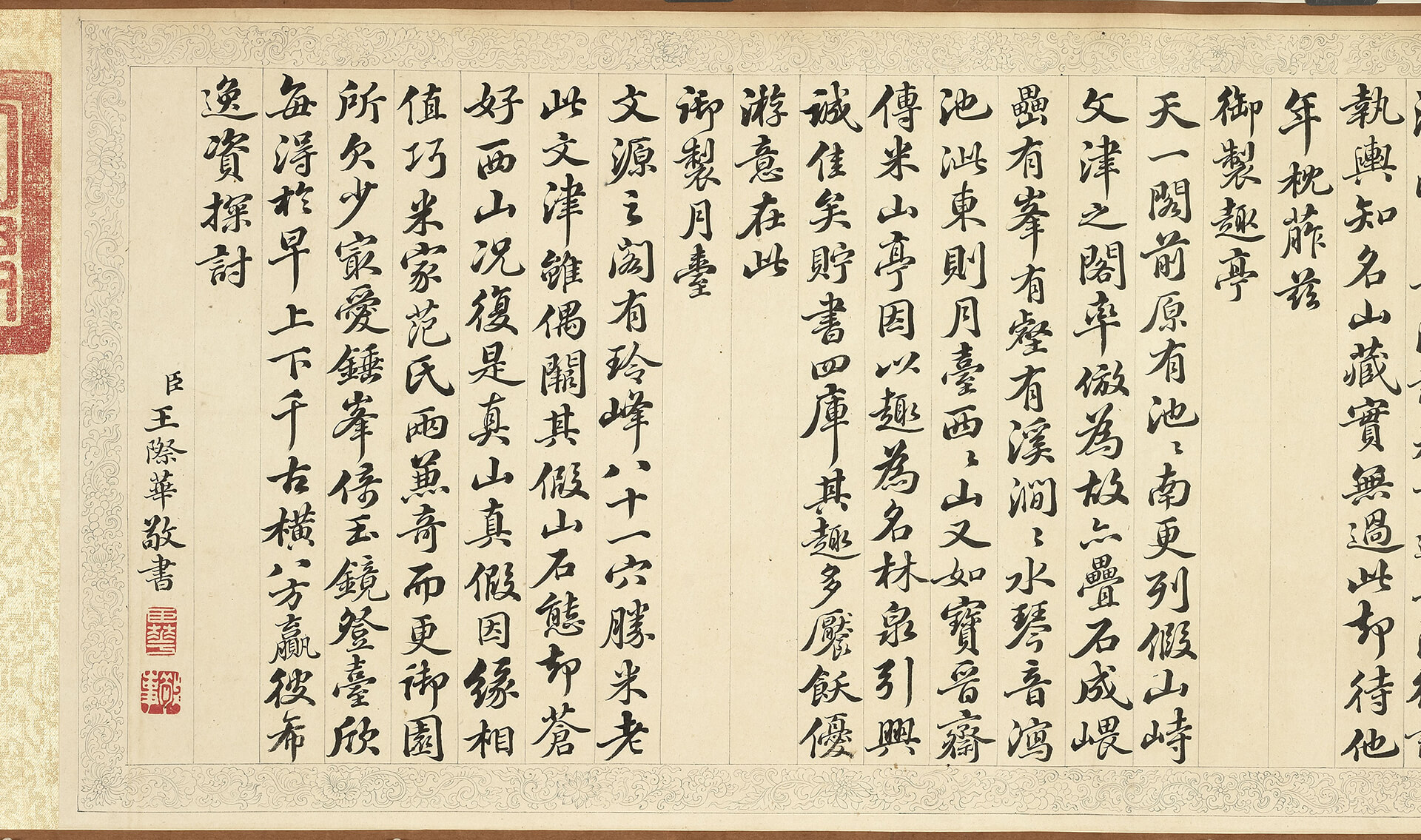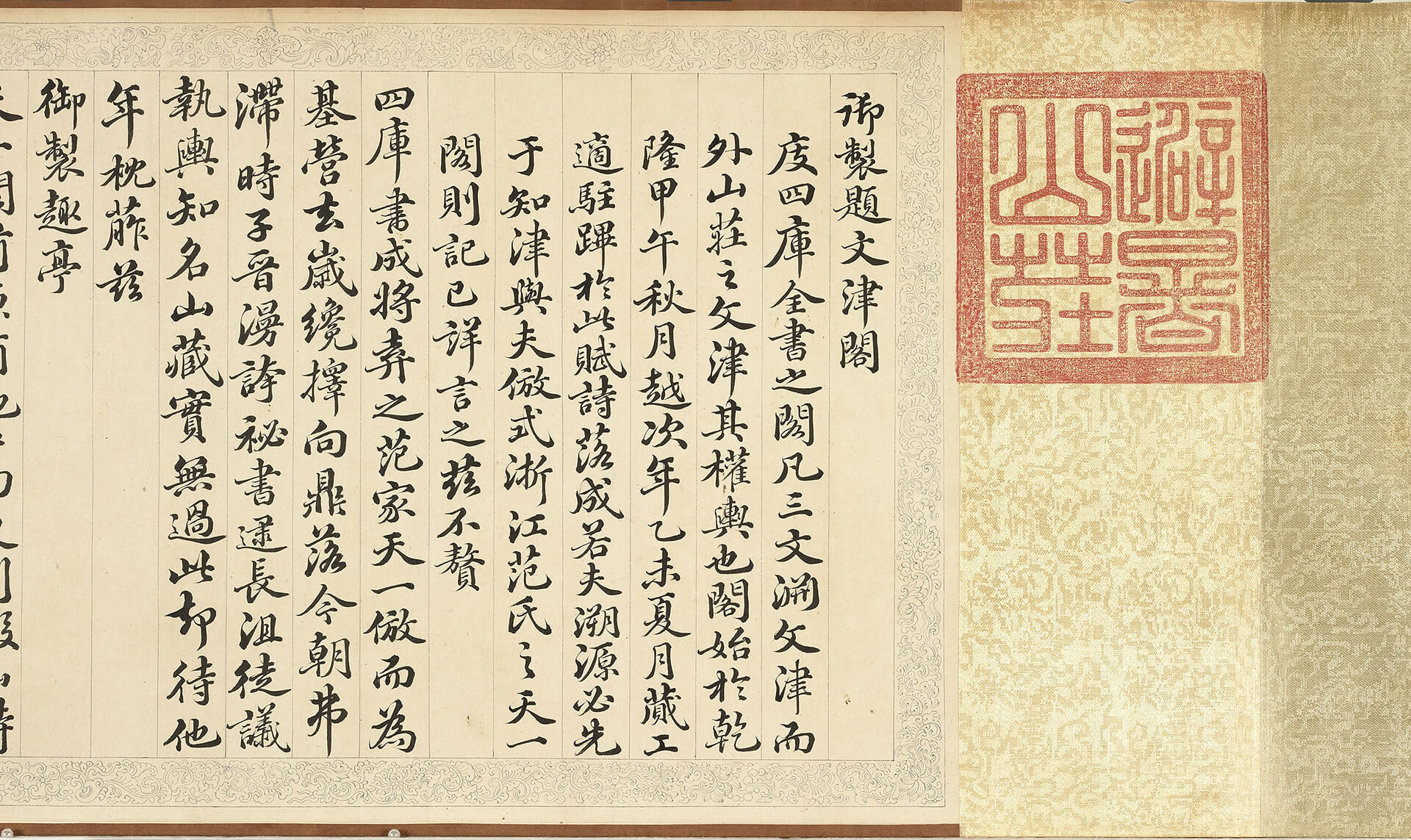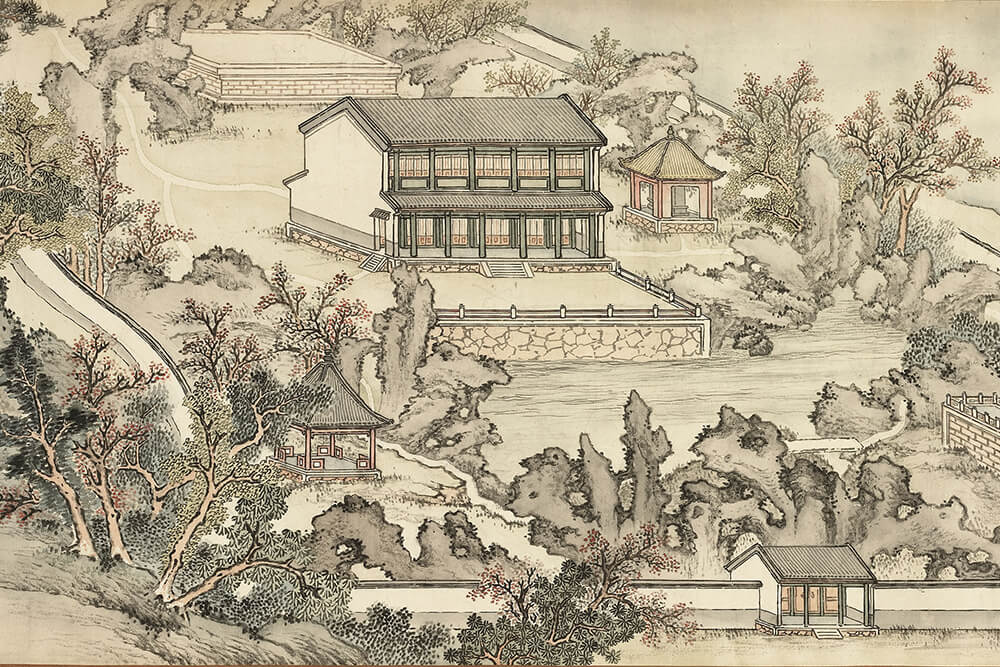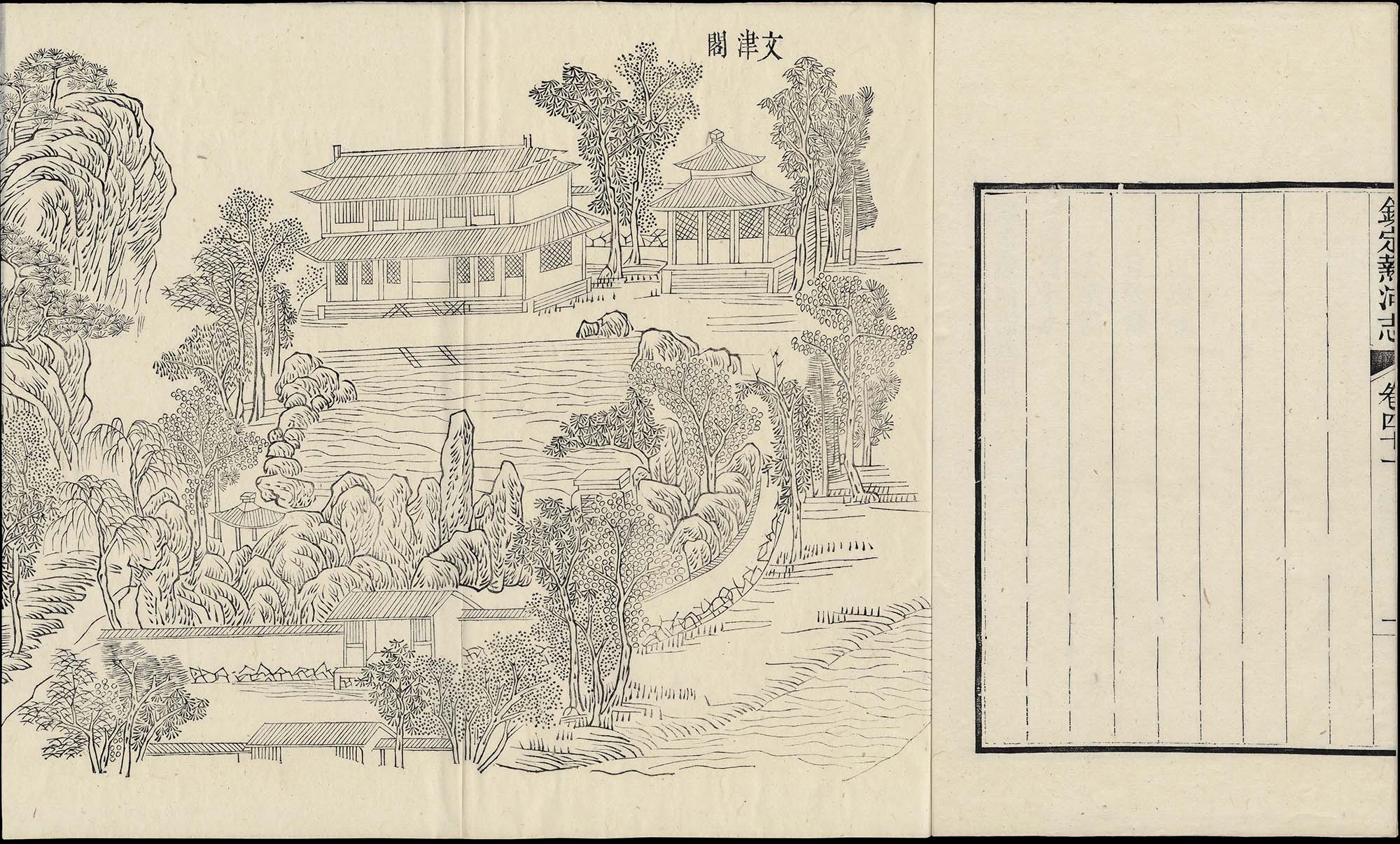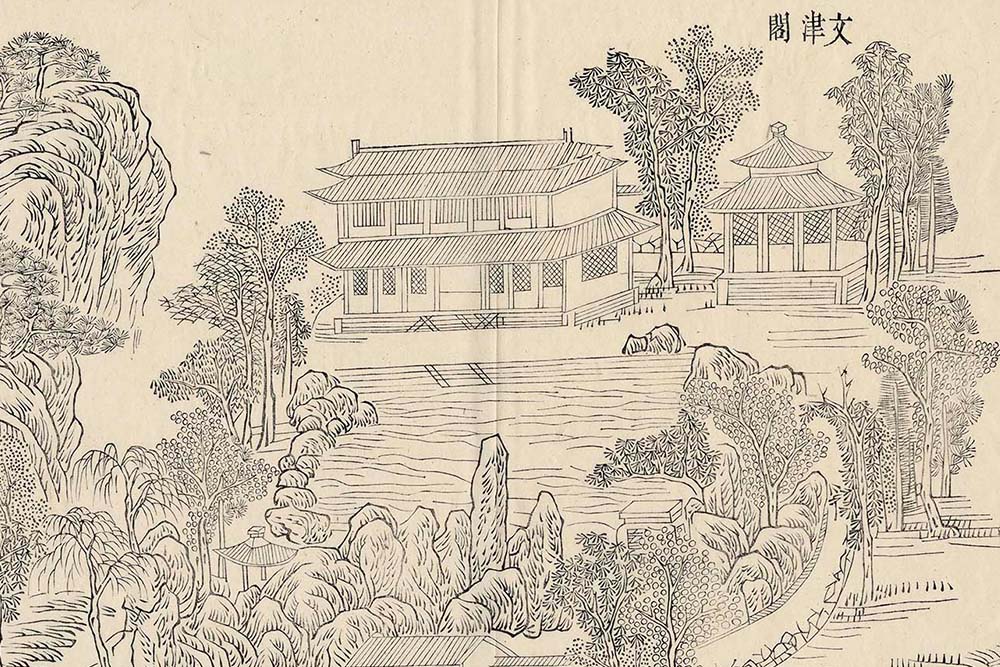The Garden as Microcosm of the Qing Empire
As the second center of political power of the Qing Empire, the architecture and layout of the Chengde Summer Resort were designed to resemble the Forbidden City in Beijing. On the other hand, the gardens were set to symbolize the empire as a unitary multi-ethnic state by incorporating replicas of scenic spots and flora from across the empire.
The resort and its outlying architectural complexes can be roughly divided into the following: palaces, lakes, plains, and temples. The palaces, comprising the emperor's office, living quarters, and ceremonial venues, were built on the same layout as the Forbidden City in Beijing, with the front area devoted to state affairs and the rear rooms used as bedchambers. The lakes were recreational spaces for the emperor. Some pavilions and pagodas had a style unique to the resort, while others were inspired by scenic spots in the Jiangnan region. The flora in this area consisted of plants native to the northern regions or transplanted from the Chinese heartland. The plains area centered around the Ten Thousand Tree Garden (Wanshuyuan), where Qing emperors would have a massive yurt erected to receive Mongolian noblemen and foreign envoys, making this place an important diplomatic venue for the empire. Surrounding the resort were the Eight Outer Temples (Waibamiao), or Chinese- and Tibetan-style temples built during the Kangxi and Qianlong reigns to mark important occasions. These temples are testament to the Qing Empire's use of religious policy to court Mongolian and Tibetan leaders.
The construction and design of the summer resort made it a veritable microcosm of the Qing Empire, reflecting its mode of rule, cultural hybridity, forms of diplomacy, military strategy and deployment, and religious policy. The archives and paintings in the Museum collection give a glimpse into this small universe.
- Illustration of the Summer Resort in Jehol
- Ink on paper
- Qing Dynasty
Judging from the names noted for the various buildings and scenic areas, the painting was created during the late Qianlong era. The bird's-eye view of the painting puts the northern orientation at the top, southern orientation at the bottom, western orientation at the left and eastern orientation at the right. The painting shows the Summer Resort and surrounding areas that are important, including the palace area, lake area, plains area, and the temple and hill area. Overall, 120 palace buildings, terraces and landscape, temples and altars, government offices and dorms, and water conservancy facilities are shown, depicting the form and style of the Summer Resort and associated buildings during the height of the Qing dynasty. The painting also reflects how the Beijing palace area is at the core of the empire, surrounded by lakes and rivers in the south, grassy plains in the northwest, the mountains in the northeast.
- Illustration of the Summer Resort in Jehol
- Ink and color on paper
- Qing Dynasty
The author of "Illustration of the Summer Resort in Jehol," housed in the National Palace Museum, remains unknown. However, judging from the names of the various buildings and scenic areas, one can deduce that the painting was created by a court painter during the late Qianlong era. The bird's-eye view of the painting puts the southern orientation at the top, northern orientation at the bottom, eastern orientation at the left, and western orientation at the right, and the painting shows a full view of the Summer Resort and its surrounding temples. A closer look at the painting reveals the painters' careless painting techniques and inelegant brushwork. Also, a few of the scenic spots or buildings have spelling errors. An actual count shows that there are 73 buildings and scenic spots with names in the painting; those with names are all inside the resort, whereas those without names are outside the resort and in the mountain temple areas. Despite the painting being a relatively careless work, it was created during the late Qianlong period, a time when the resort had just undergone an expansion. Thus, the painting serves as an important reference for people to understand the history of the resort.
- Notes on the Summer Resort
- From fascicle 22 of Yuzhiwen Sanji (Second Supplement to the Collection of Imperial Literary Works)
- Written by Emperor Kangxi, Qing dynasty
- Jiang Lian edition, the 53rd year of the Kangxi reign (1714), Qing dynasty
The "Notes on the Summer Resort" is an important reference for us to understand how the Summer Resort went from the Jehol Resort to the Summer Resort. The document was written in the second half of June 1711, which corresponds to the year that Emperor Kangxi changed the name of the Jehol Resort to the Summer Resort. The text states that Emperor Kangxi chose Jehol as his resort because it was close to the capital (two days round trip). Functionally, it was not much different than the Forbidden City. Another reason was that the weather and environment of Jehol was suitable for relaxation and spiritual cultivation. Finally, the text points out that the geographical scenery at Jehol allows the emperor to quietly gain insight into people's livelihoods and living, so that he can understand how to use governance to serve the people.
- From fascicle 30 of Qinding Jehol Zhi (Imperially Endorsed Local Gazetteer of Jehol)
- Compiled by He Shen, et al., on imperial order
- Imprint by the Imperial Printing Office at Wuyingdian Hall, 46th year of the Qianlong reign (1781), Qing dynasty
The main gate of the Summer Resort, the "Gate of Beauty and Integrity," is the first entry for entering the palace area's Main Palace. The watchtower-style building adds to the imposing atmosphere. This gate was built in 1754 and has a plaque bearing the words "Gate of Beauty and Integrity" written in Chinese by Emperor Qianlong. The same text is repeated in Manchu, Tibetan, Hui, and Mongolian from right to left. The Chinese words "Beauty and Integrity" was inspired by a section of the I Ching (the Book of Changes), "The sun and moon have their place in the sky. All the grains, grass, and trees have their place on the earth. The double brightness adheres to what is correct, and the result is the transforming and perfecting all under the sky". In Manchu (genggiyen tob duka), it means "bright gate," which is a simpler meaning. The five different languages on the gate reflect the many ethnic cultures under the Qing rule.
Lake Area: Collection of Cultural and Material Assets
The resort's lake area neighbors the palace area and is formed from nine lakes of various sizes. The lakes contain islands that have their own name, such as Wenyuan Island, Ruyi Bank, Green Lotus Island, Gold Mountain, and Moon and River Island. The islands are connected by bridges and embankments. The area is dotted with pavilions and shade trees. Not only are some plants brought here from other parts of the empire, but the buildings also copy the gardens in the Jiangnan area. For example, the Tower of Mist and Rain on Green Lotus Island was built based on Jiangnan Jiaxing's Tower of Mist and Rain. Wenyuan's Lion Grove Garden copied Suzhou's Lion Grove Garden. Gold Mountain Island's design came from Zhenjiang's Gold Mountain. This area is reminiscent of the view of Jiangnan, which is why it was nicknamed "Jiangnan outside of the wall." The lake area was where Qing dynasty royalty went to escape the summer heat when they stayed at the resort. Emperors Kangxi and Qianlong went on to choose 36 scenic areas at the resort and let many official documents and paintings.
Illustration of the Tower of Mist and Rain (Yanyulou)
- From fascicle 35 of Qinding Jehol Zhi (Imperially Endorsed Local Gazetteer of Jehol)
- Compiled by He Shen, et al., on imperial order
- Imprint by the Imperial Printing Office at Wuyingdian Hall, 46th year of the Qianlong reign (1781), Qing dynasty
Zhejiang's Tower of Mist and Rain is a group of buildings in a garden on a lake island. When Emperor Qianlong visited the south, he often climbed the Tower of Mist and Rain because he liked its misty view of the lake at dusk. On his fifth visit of the south in 1780, Qianlong ordered the construction of a Tower of Mist and Rain to be built on the Summer Resort's Green Lotus Island based on Zhejiang's Tower of Mist and Rain. A comparison between the painting of the Tower of Mist and Rain in the Records of the Southern Tour and that in the Jehol Zhi shows the two Towers of Mist and Rain are slightly different, but the layout is similar.
Illustration of the Lion Grove (Shizilin) of the Wenyuan Garden
- From fascicle 40 of Qinding Jehol Zhi (Imperially Endorsed Local Gazetteer of Jehol)
- Compiled by He Shen, et al., on imperial order
- Imprint by the Imperial Printing Office at Wuyingdian Hall, 46th year of the Qianlong reign (1781), Qing dynasty
Jehol Resort's Lion Grove Wenyuan Garden is located to the southeast of the resort's lake area and in front of the Comfort Mountain Hall. This garden was built during the latter half of Emperor Qianlong's third decade of reign and based on Suzhou's Lion Grove Garden. Strangely shaped rocks are piled up to create manmade mountains that display intricate construction. The result resemble the Suzhou Lion Grove Garden painted by the Yuan dynasty painter Ni Zan (1301-1374). The Summer Resort's garden was named the Lion Grove Wenyuan Garden to distinguish it from the Suzhou Lion Grove Garden and Beijing's Old Summer Palace Lion Grove Garden.
Chinese Globe Flowers under Sunshine
- From Bishu Shanzhuang Tu Bing Qianlong Tishi Ce (Illustrations of the Chengde Summer Resort with Poetic Works by Emperor Qianlong)
- Zhang Ruoai, Qing dynasty
- Qianlong reign (1736-1795), Qing dynasty
The Chinese globe flowers found in front of the Yanxun Mountain Hall of the Summer Resort (in Ruyizhou Island) came from Mount Wutai in Shanxi Province. Said flowers were introduced to and planted at the resort at the request of Emperor Kangxi after he went on a western inspection tour to Mount Wutai. Chinese globe flower petals are golden and bright in color, and their branches and leaves are tall and sturdy. In the midst of summer, the sun shone down and created dazzling Chinese globe flowers. Emperor Kangxi thus commented "Chinese golden globe flowers reflecting bright sunshine." Said flowers subsequently became one of the 36 scenic spots of the resort. To cater to the emperor, court painters also painted the planting of Chinese globe flowers in a variety of ways.
Poem on the Quting Gazebo and the Yuetai Platform of the Wenjinge Pavilion, inscribed by Emperor Qianlong
- Written by Wang Jihua, and illustrated by Hu Gui, Qing dynasty
- Qianlong reign (1736-1795), Qing dynasty
In 1774, Qianlong decreed the construction of seven royal libraries in Beijing, Jehol, Jiangsu, and Zhejiang based on the Fan family's (Zhejiang Ningbo) Tianyi Ge library. Of these seven large royal libraries, the Wenjinge Pavilion at the Jehol Summer Resort began construction in the fall of 1774 and was completed the following summer. It was the first of the seven royal libraries to be completed.
The Quting Gazebo and Yuetai Platform were built on the east and west side of the fake mountain in front of the Summer Resort's Wenjinge Pavilion. The Quting Gazebo can be seen on the west side of the painting. The Yuetai Platform on the east side is for viewing the landscape around the pavilion and the resort. When the Wenjinge Pavilion was completed, Emperor Qianlong paid a special visit, and wrote three poems for the Wenjinge Pavilion, the Quting Gazebo, and the Yuetai Platform. Emperor Qianlong was extremely pleased with the building of the pavilion at the resort and collecting books. He believed that "although the resort is outside of the walls and was a hinterland in ancient times, today it has become rich, cultured, and more prosperous." Every year, emperor and their officials, foreign tribal leaders, and foreign ambassadors gathered at the resort. Building the royal pavilion here also showed the world the benevolent and prosperous rule of the emperor.

